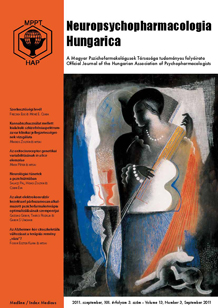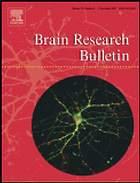
Overcoming the Bell-Shaped Dose-Response of Cannabidiol by Using Cannabis Extract Enriched in Cannabidiol




“Accumulating data confirmed that the endocannabinoid system (ECS) is involved in the regulation of stress response and emotional processes, therefore ECS became an important pharmacological target as a potential anxiolytic.
Our results confirmed earlier positive data on the association between ECS and anxious phenotype. According to our findings ECS plays a significant role in the pathomechanism of anxious disorders by a complex mechanism of genetic interaction with the serotonin transporter gene and childhood traumas.”
https://www.ncbi.nlm.nih.gov/pubmed/29411704

“An advanced Mendelian Cannabis breeding program has been developed utilizing chemical markers to maximize the yield of phytocannabinoids and terpenoids with the aim to improve therapeutic efficacy and safety.
Cannabis is often divided into several categories based on cannabinoid content. Type I, Δ9-tetrahydrocannabinol-predominant, is the prevalent offering in both medical and recreational marketplaces. In recent years, the therapeutic benefits of cannabidiol have been better recognized, leading to the promotion of additional chemovars: Type II, Cannabis that contains both Δ9-tetrahydrocannabinol and cannabidiol, and cannabidiol-predominant Type III Cannabis.
While high-Δ9-tetrahydrocannabinol and high-myrcene chemovars dominate markets, these may not be optimal for patients who require distinct chemical profiles to achieve symptomatic relief. Type II Cannabis chemovars that display cannabidiol- and terpenoid-rich profiles have the potential to improve both efficacy and minimize adverse events associated with Δ9-tetrahydrocannabinol exposure. Cannabis samples were analyzed for cannabinoid and terpenoid content, and analytical results are presented via PhytoFacts, a patent-pending method of graphically displaying phytocannabinoid and terpenoid content, as well as scent, taste, and subjective therapeutic effect data.
Examples from the breeding program are highlighted and include Type I, II, and III Cannabis chemovars, those highly potent in terpenoids in general, or single components, for example, limonene, pinene, terpinolene, and linalool. Additionally, it is demonstrated how Type I - III chemovars have been developed with conserved terpenoid proportions. Specific chemovars may produce enhanced analgesia, anti-inflammatory, anticonvulsant, antidepressant, and anti-anxiety effects, while simultaneously reducing sequelae of Δ9-tetrahydrocannabinol such as panic, toxic psychosis, and short-term memory impairment.”

“The G protein-coupled receptor 55 (GPR55) is a novel cannabinoid receptor, whose exact role in anxiety remains unknown. The present study was conducted to explore the possible mechanisms by which GPR55 regulates anxiety and to evaluate the effectiveness of O-1602 in the treatment of anxiety-like symptoms. Mice were exposed to two types of acute stressors: restraint and forced swimming. Anxiety behavior was evaluated using the elevated plus maze and the open field test. We found that O-1602 alleviated anxiety-like behavior in acutely stressed mice. We used lentiviral shRNA to selective ly knockdown GPR55 in the medial orbital cortex and found that knockdown of GPR55 abolished the anxiolytic effect of O-1602. We also used Y-27632, a specific inhibitor of ROCK, and U73122, an inhibitor of PLC, and found that both inhibitors attenuated the effectiveness of O-1602. Western blot analysis revealed that O-1602 downregulated the expression of GluA1 and GluN2A in mice. Taken together, these results suggest that GPR55 plays an important role in anxiety and O-1602 may have therapeutic potential in treating anxiety-like symptoms.”
“LH-21 is a triazol derivative that has been described as a low-permeant neutral CB1 antagonist, though its pharmacology is still unclear. It has been associated with anti-obesity actions in obese rats. However, its role in preventing type 2 diabetes (T2D) onset have not been studied yet. Given CB1 receptors remain as potential pharmacological targets to fight against obesity and T2D, we wanted to explore the metabolic impact of this compound in an animal model of obesity and pre-diabetes as well as the lack of relevant actions in related central processes such as anxiety. These results suggest that LH-21 can be a new candidate to fight against diabetes onset. Indeed, this compound shows potential in counteracting obesity-related anxiety.” https://www.ncbi.nlm.nih.gov/pubmed/28638091 https://www.nature.com/articles/s41598-017-03292-w
“Pathological anxiety is the most common type of psychiatric disorder. The current first-line anti-anxiety treatment, selective serotonin/noradrenalin reuptake inhibitors, produces a delayed onset of action with modest therapeutic and substantial adverse effects, and long-term use of the fast-acting anti-anxiety benzodiazepines causes severe adverse effects.
Inhibition of the fatty acid amide hydrolase (FAAH), the endocannabinoid N-arachidonoylethanolamine (AEA) degradative enzyme, produces anti-anxiety effects without substantial “unwanted effects” of cannabinoids, but its anti-anxiety mechanism is unclear.
We propose that the rapid anti-anxiety effects of FAAH inhibition are due to AEA activation of astroglial CB1R and subsequent basolateral amygdala LTD in vivo.”

“Social isolation stress (SIS) paradigm is a chronic stress procedure able to induce profound behavioral and neurochemical changes in rodents and evokes depressive and anxiety-like behaviors.
Recent studies demonstrated that the cannabinoid system plays a key role in behavioral abnormalities such as depression through different pathways; however, there is no evidence showing a relation between SIS and the cannabinoid system.
This study investigated the role of the cannabinoid system in depressive-like behavior and anxiety-like behavior of IC animals.
Our findings suggest that the cannabinoid system is involved in depressive-like behaviors induced by SIS.
We showed that activation of cannabinoid receptors (type 1 and 2) could mitigate depression-like behavior induced by SIS in a mouse model.”

“Anxiety and sleep disorders are often the result of posttraumatic stress disorder and can contribute to an impaired ability to focus and to demonstration of oppositional behaviors.
These symptoms were present in our patient, a ten-year-old girl who was sexually abused and had minimal parental supervision as a young child under the age of five. Pharmaceutical medications provided partial relief, but results were not long-lasting, and there were major side effects. A trial of cannabidiol oil resulted in a maintained decrease in anxiety and a steady improvement in the quality and quantity of the patient’s sleep.
Cannabidiol oil, an increasingly popular treatment of anxiety and sleep issues, has been documented as being an effective alternative to pharmaceutical medications. This case study provides clinical data that support the use of cannabidiol oil as a safe treatment for reducing anxiety and improving sleep in a young girl with posttraumatic stress disorder.”

“There is substantial evidence from studies in humans and animal models for a role of the endocannabinoid system in the control of emotional states. Several studies have shown an association between exposure to trauma and substance use. Specifically, it has been shown that there is increased prevalence of cannabis use in post-traumatic stress disorder (PTSD) patients and vice versa.
Clinical studies suggest that PTSD patients may cope with their symptoms by using cannabis. This treatment-seeking strategy may explain the high prevalence of cannabis use among individuals with PTSD.
Preliminary studies in humans also suggest that treatment with cannabinoids may decrease PTSD symptoms including sleep quality, frequency of nightmares, and hyperarousal.
Studies in animal models have shown that cannabinoids can prevent the effects of stress on emotional function and memory processes, facilitate fear extinction, and have an anti-anxiety-like effect in a variety of tasks.
Moreover, cannabinoids administered shortly after exposure to a traumatic event were found to prevent the development of PTSD-like phenotype.
In this article, we review the existing literature on the use of cannabinoids for treating and preventing PTSD in humans and animal models.
There is a need for large-scale clinical trials examining the potential decrease in PTSD symptomatology with the use of cannabis.
In animal models, there is a need for a better understanding of the mechanism of action and efficacy of cannabis. Nevertheless, the end result of the current clinical and preclinical data is that cannabinoid agents may offer therapeutic benefits for PTSD.”

“The discovery may help explain why marijuana users say they take the drug mainly to reduce anxiety” said Sachin Patel, M.D., Ph.D., the paper’s senior author and professor of Psychiatry and of Molecular Physiology and Biophysics at Vanderbilt. He said, “this could be highly important for understanding how cannabis exerts its behavioral effects.”
The study titled, “Multiple Mechanistically Distinct Modes of Endocannabinoid Mobilization at Central Amygdala Glutamatergic Synapses” is published in the March 2014 issue of the journal Neuron.”